The Krakatoa eruption of 1883 was one of the deadliest in recorded history. The volcano, which lies on an island in Indonesia’s Sunda Strait, had been threatening to blow for months.
It had been sending plumes of ash and steam into the sky since May of that year, but at 1pm on 26 August the pressure beneath its rocky cones finally became too much.
Four increasingly violent explosions over the next 24 hours all but destroyed the island. They killed over 36,000 people and could be heard 3,500 kilometres away in Australia.
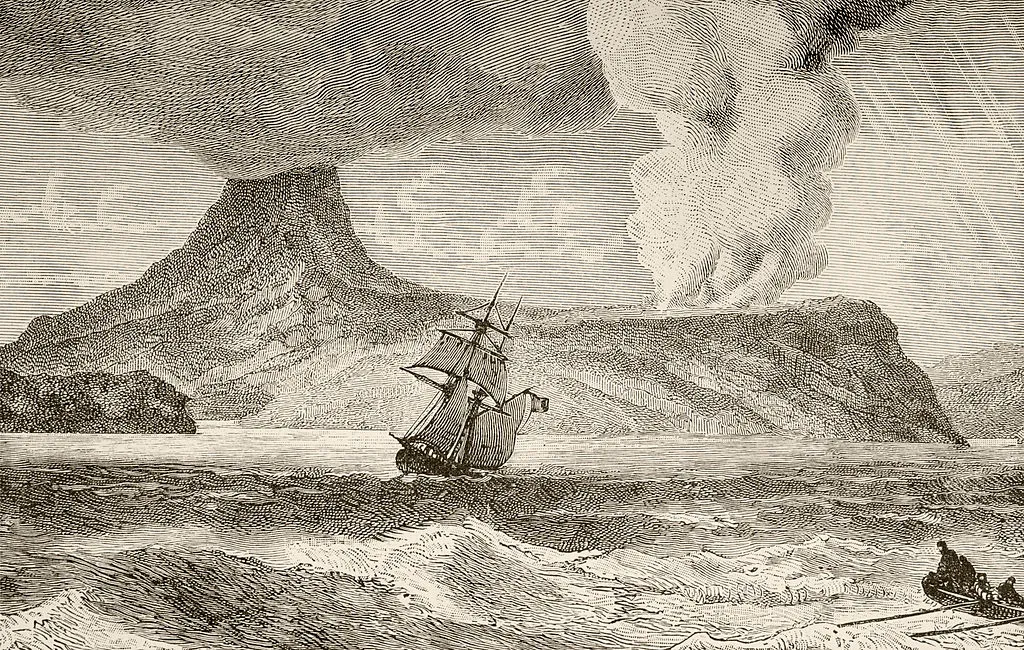
21 cubic kilometres of rock and ash was blasted across 800,000 square kilometres and over 80 kilometres up into the air.
So much ash was released into the atmosphere, the region was plunged into darkness for two and a half days.
As the ash diffused and drifted around the world, its chemicals absorbed different wavelengths of light, causing spectacular red and orange sunsets and making the Moon glow blue for months.
There was enough ash lingering in the atmosphere a year later to cause summer temperatures in the Northern Hemisphere to drop by an average of 0.4°C.
Then, on a clear summer’s night in 1885, amateur astronomers in the German town of Bad Kissingen spotted some new, mysterious-looking clouds.
It wasn’t so much that they were thinner and wispier than regular clouds, but they were visible after dark.
They actually appeared to be shining.
Those mysterious clouds would become known as noctilucent clouds (NLCs), or night-shining clouds.
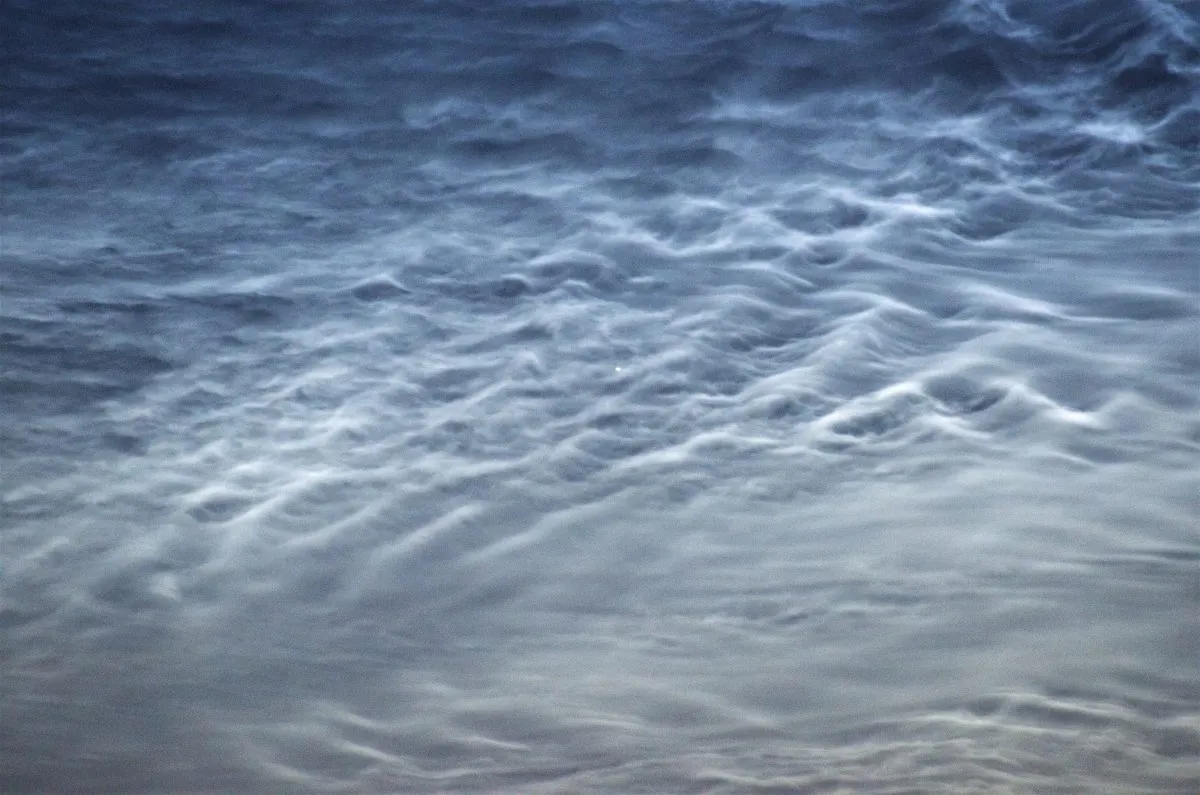
How to see noctilucent clouds
Noctilucent clouds can be seen every year between May and August and have become a favourite target for many observers. And since that first sighting, we’ve gradually learned more about them.
We know NLCs can only be seen from latitudes of 45–80° both north and south, and they form around 75–85 kilometres above Earth’s surface, at the top of the mesosphere, the highest part of our atmosphere.
The thermosphere and exosphere are both higher and officially part of Earth’s atmosphere, but the air density is so low that they’re generally considered to be ‘space’.
The International Space Station, for example, orbits in the thermosphere and most satellites orbit in the exosphere.
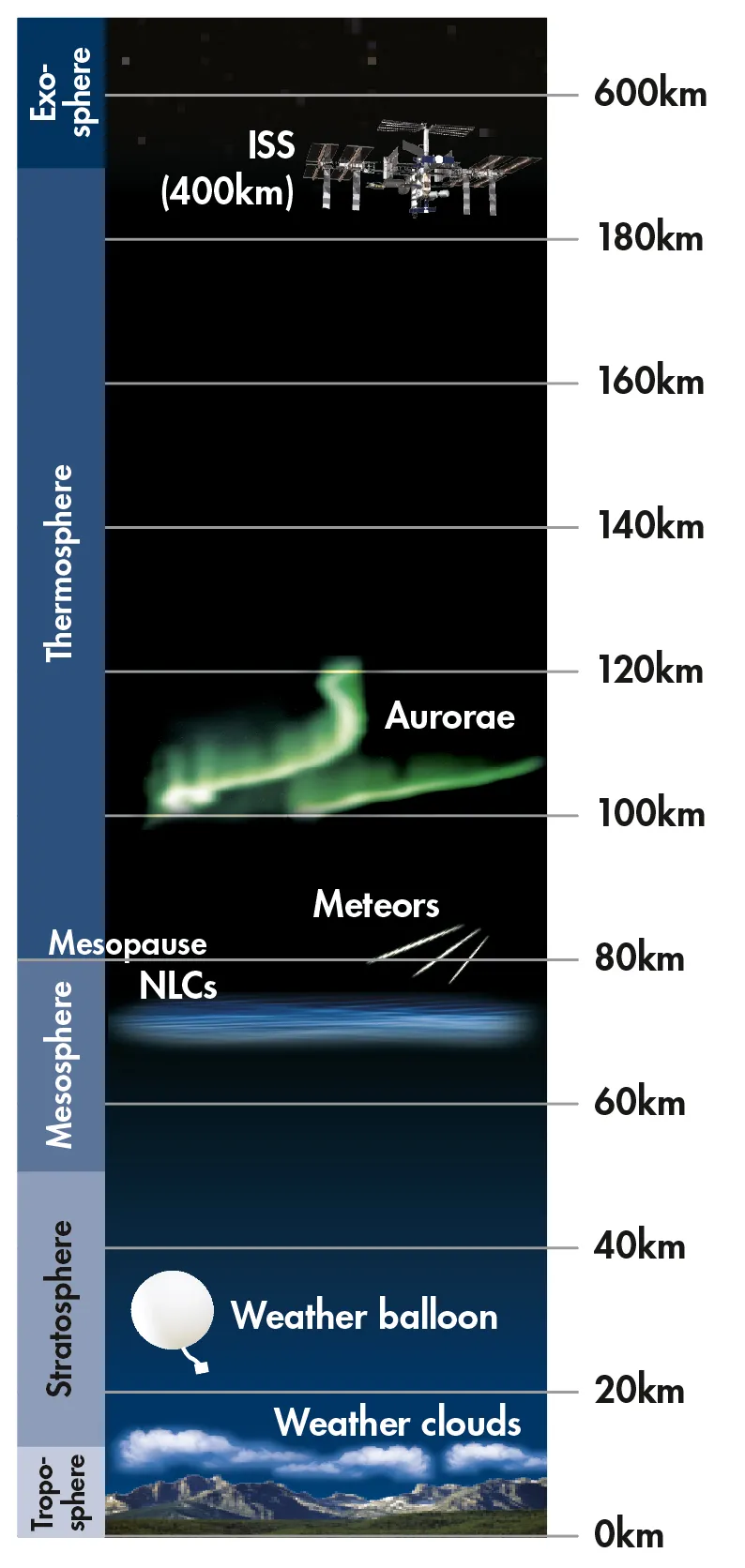
How noctilucent clouds form
For a long time, much about NLCs remained mysterious, even contradictory.
For instance, their altitude: clouds need water vapour to form, yet the mesosphere is drier than the Sahara Desert.
Then there’s their occurrence only during warm summer months, when the mesosphere is at its coldest.
And finally, they appear to shine brightly, often shimmering in silvery blue or sometimes orangey-red, but are only seen after dark. Nothing about NLCs seemed to make sense.
Yet based on when NLCs were first spotted, there was reason to believe they could be connected to the Krakatoa eruption.
"For NLCs to exist, you need three things," says Dr Gregory Brown, an astronomer at the Royal Observatory Greenwich.
"The temperature must be very cold, about –120°C."
"You need a condensation centre – a particle, basically, something for water or ice to condense around and start the process of creating a cloud.
"In the case of NLCs, it’s thought these condensation centres are probably meteoric dust, although volcanic dust could potentially do the same thing.
"So that’s one possible connection to Krakatoa."
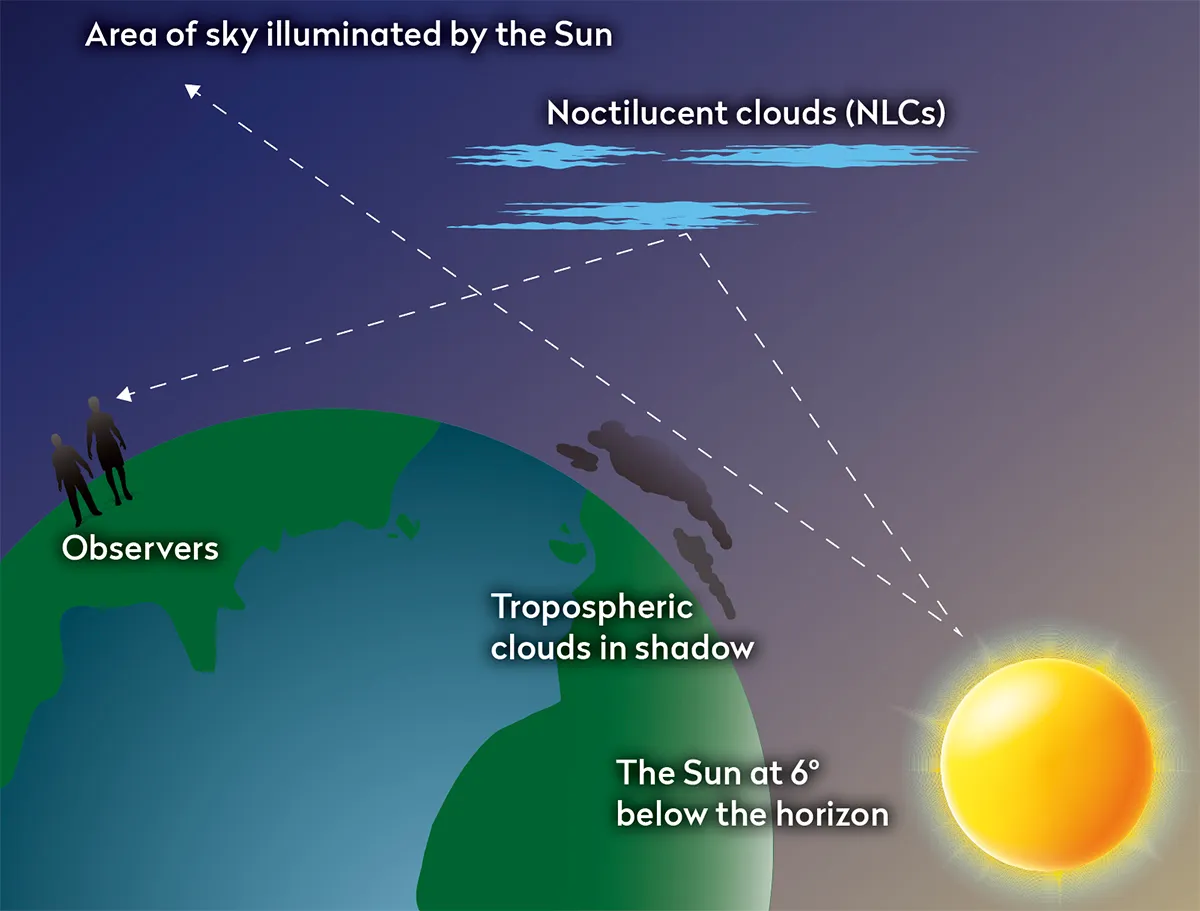
"You need water, because the mesosphere is incredibly dry – many times drier than the most arid desert on Earth. And one thing the Krakatoa eruption did was release vast amounts of water vapour into the atmosphere.
"That might have been the thing that triggered the formation of the first NLCs we observed – not necessarily the condensation centres created by the volcanic dust, but the steam the eruption pushed up into the mesosphere."
For a long time that was the working theory for what was causing NLCs: steam from volcanic eruptions condensing around meteoric dust particles in the freezing temperatures of the mesosphere.
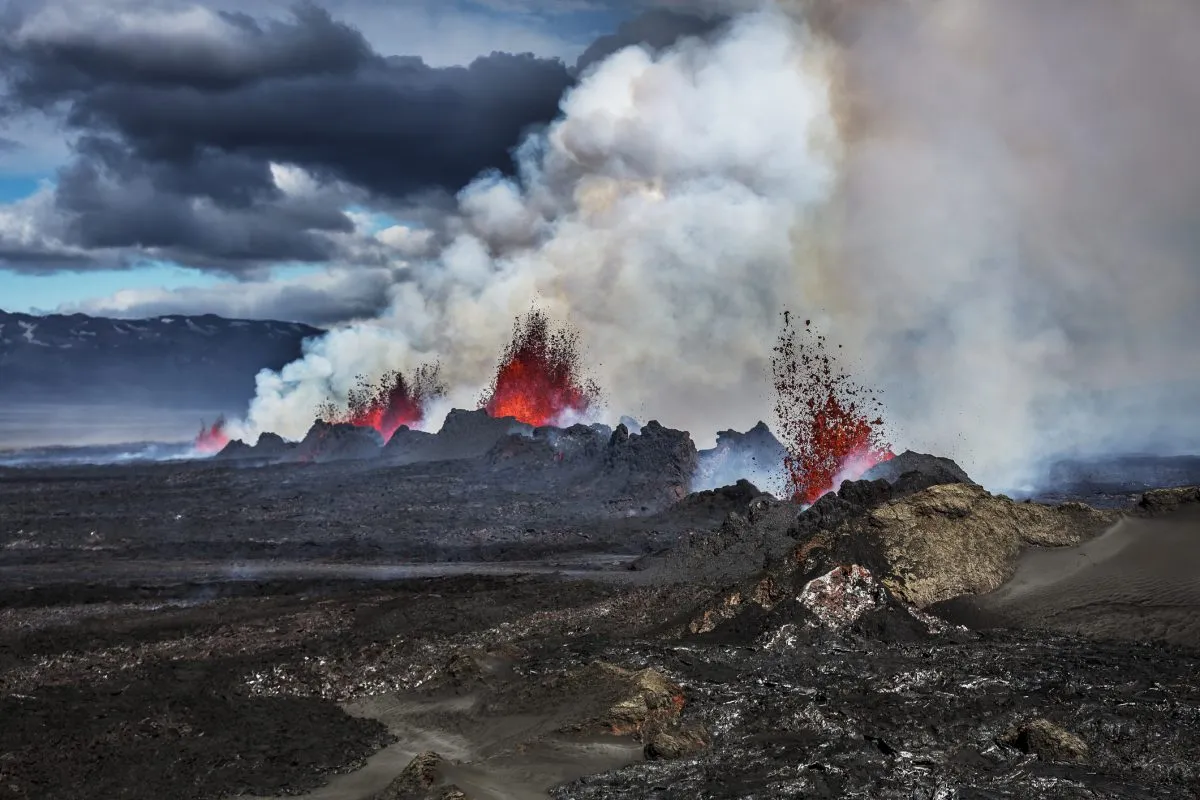
But the first NLC mystery we managed to solve was why they only appear after dark during the summer. And it’s because they’re so far above Earth’s surface.
NLCS are too tenuous to be visible during the day, but because they’re so high, ice crystals in NLCs can reflect sunlight once the Sun has dropped below the horizon.
Essentially they’re giant, high-altitude reflectors sitting in the path of a light source that’s out of sight to those of us on the ground.
"You can normally see NLCs about an hour after sunset or an hour before sunrise during the middle of the summer, at astronomical twilight," says Aidan McGivern, a Met Office meteorologist.
"The Sun is sitting just below the horizon, providing enough light from underneath to illuminate these very thin clouds of ice crystals."
And noctilucent clouds are only visible from late May through to mid-August, in the Northern Hemisphere, because that’s when temperatures in the mesosphere are at their coldest.
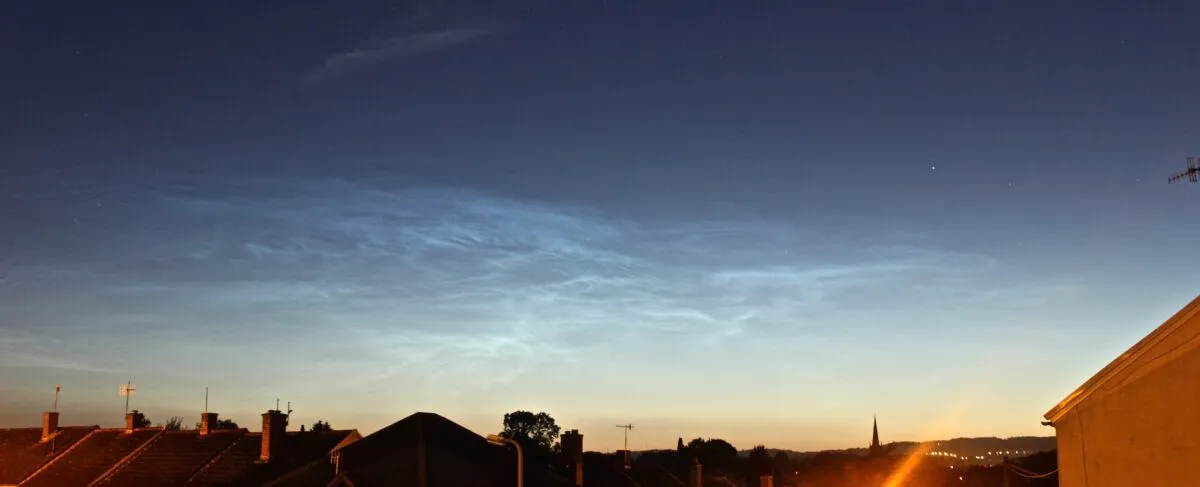
Observing and studying noctilucent clouds
Since that initial sighting in 1885, we’ve observed and studied NLCs whenever they appeared.
We’ve become more familiar with them, through ground- and space-based observations, and begun to gain an understanding of them.
But just as we were solving the mysteries of where, when and how they form, there was a sudden change: NLCs started appearing more frequently.
Data gathered over a 40-year period from the mid-1960s to the mid-2000s shows evidence for sightings of NLCs becoming more common.
And not just because more people are looking for them. Computer simulations modelling the atmosphere over the Northern Hemisphere from 1871 until 2008 found NLCs became significantly more visible during that period.
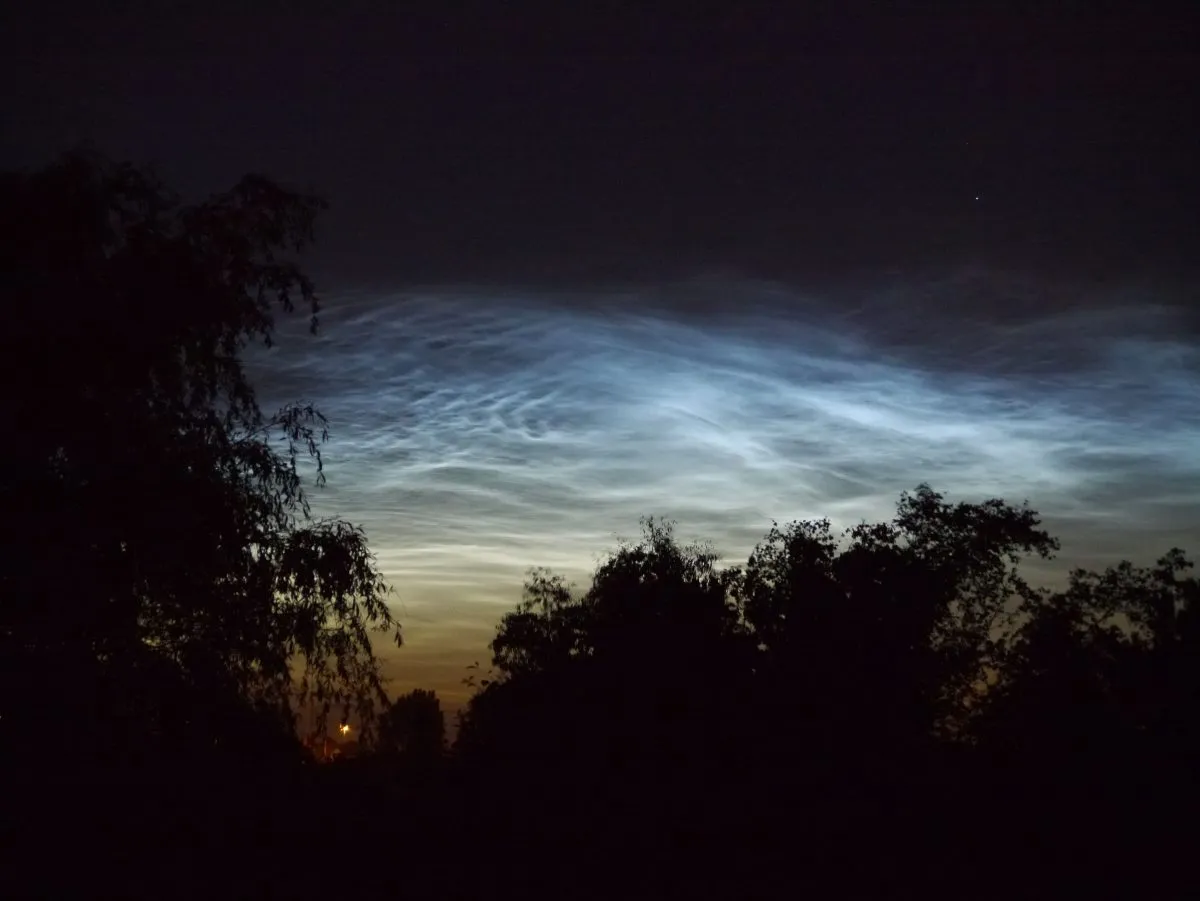
"In the 19th century, NLCs were probably visible only once every several decades," says Prof Franz-Josef Lübken at the Leibniz Institute of Atmospheric Physics, who led the 2018 computer modelling study.
"[But] people living in the mid-to-high latitudes now have a good chance of seeing NLCs several times each summer."
There’s been no significant increase in volcanic eruptions or, as far as we’re aware, meteoric activity during that period, so what could explain the increase?
One theory was that changes in solar activity might be to blame, but the increasing NLC trend doesn’t correlate with the 11-year solar cycle, so that’s effectively been ruled out.
That leaves us with only one other possible explanation: a change in Earth’s atmosphere. The sort of change that can be linked to human activity.
NLCs and climate change

"An increase in carbon dioxide in the atmosphere leads to higher temperatures in the troposphere [the lowest level of Earth’s atmosphere]," says McGivern.
"But because greenhouse gases like carbon dioxide trap heat closer to the surface, the stratosphere and the mesosphere, further up, cool down. When you have lower temperatures in the mesosphere, you’re more likely to get particles of water vapour condensing into ice crystals to form NLCs."
But carbon dioxide isn’t the only problem. "What’s probably a more likely cause for the increased sightings of NLCs is the increasing amount of methane in the atmosphere," says McGivern.
Methane, another greenhouse gas that has a more potent effect than carbon dioxide, reacts with ultraviolet radiation in sunlight to form water vapour.
And if you combine more water vapour with a colder mesosphere, chances are you get more NLCs.
"Although it’s not clear whether this connection does actually exist, there is some evidence to say NLCs might be one of the more obviously visible signs of climate change," says Brown.
"NLCs are not damaging in and of themselves, but they show how the atmosphere has subtly, but very importantly, changed due to human emissions."
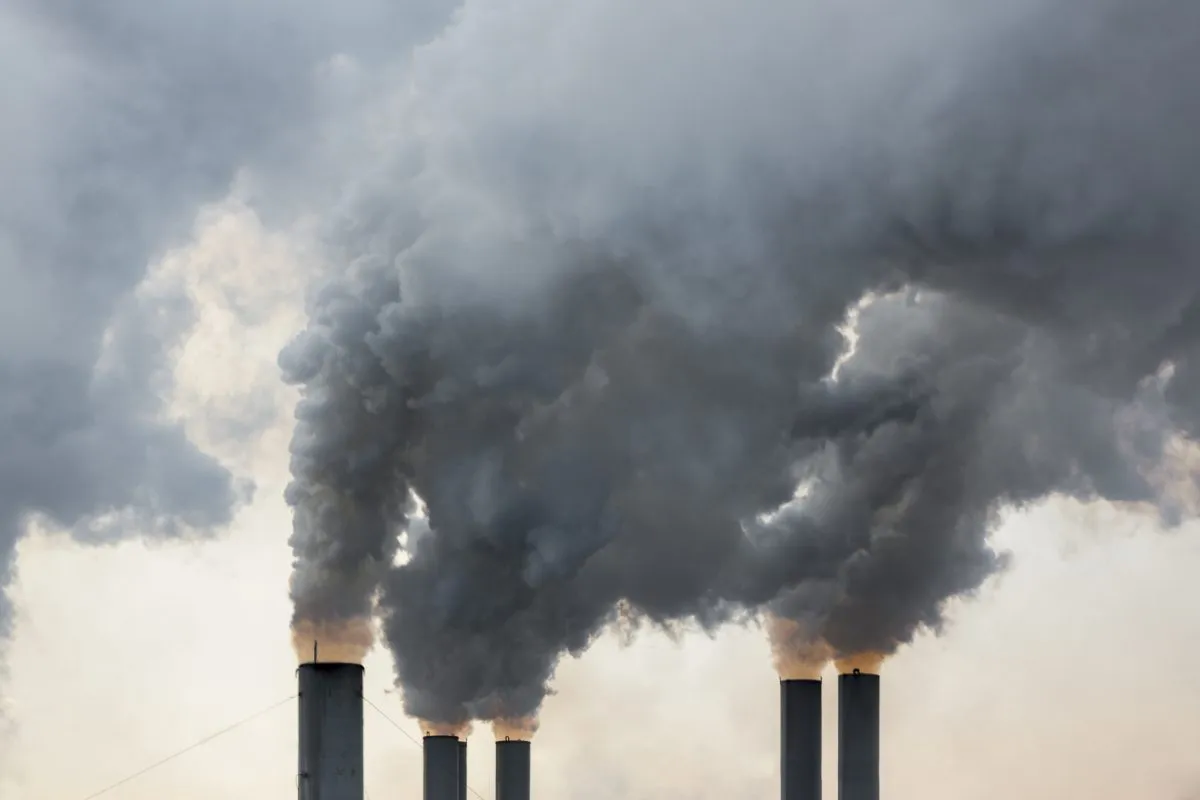
More noctilucent mysteries
There are still more NLC mysteries to solve. For instance, what role space traffic might play in their variability.
A 2005 study showed that water vapour from Space Shuttle launches could increase NLCs at higher latitudes, while a study published in 2022 showed a correlation between rocket launches and the frequency of NLCs appearing at latitudes of 56–60°.
Then there’s how gravity (or buoyancy) waves, generated by weather systems moving through the troposphere, might affect NLCs, which NASA plans to launch a mission to study late in 2023 (more on this below).
But perhaps the most puzzling question – for casual observers, at least – is why these clouds, which form within Earth’s atmosphere, are seemingly of greater interest to astronomers and the space science community than to meteorologists?
Fortunately this mystery has a simple solution: by floating near the edge of space, just shy of the Kármán Line, NLCs are effectively out of range for meteorologists.
"Although they are technically clouds and they form in the same way that clouds in the troposphere form, they don’t particularly play a role in our day-to-day weather," says McGivern.
"You wouldn’t factor them into our weather models, and they’re so thin and high up that they don’t have much of a consequence for our climate."
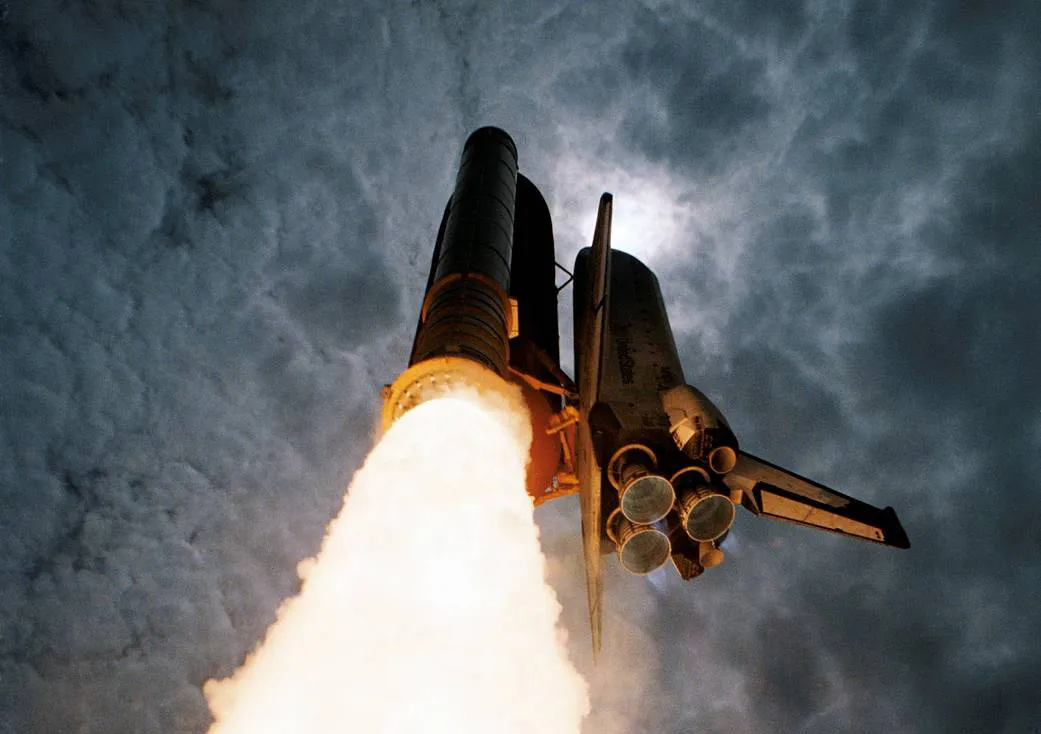
More to learn to solve the puzzle
While scientific opinion seems to agree that climate change is a likely cause of the increase in NLCs we are seeing, this hasn’t yet been established conclusively.
After all, scientists have only known about the phenomenon for a little over a century, and have only been able to study the clouds from space since the 1960s and 1970s
Existing data only covers a relatively short span of time – too short to draw any concrete conclusions – yet human activity in the form of the Industrial Revolution, the burning of fossil fuels and its effect on the atmosphere, all seem to tally with the changes we’re seeing.
What’s clear is that NLCs still have much to teach us. And as much as they may have changed since we first spotted them in 1885, NLCs’ contradictory nature has remained constant.
They’re still most visible after dark and before dawn; they still require the coldest of temperatures that occur during the hottest months of summer; and they still rely on the presence of water in one of the driest parts of Earth’s atmosphere.
And, as Brown points out, "They’re the one type of cloud that astronomers like to see."
Noctilucent cloud missions
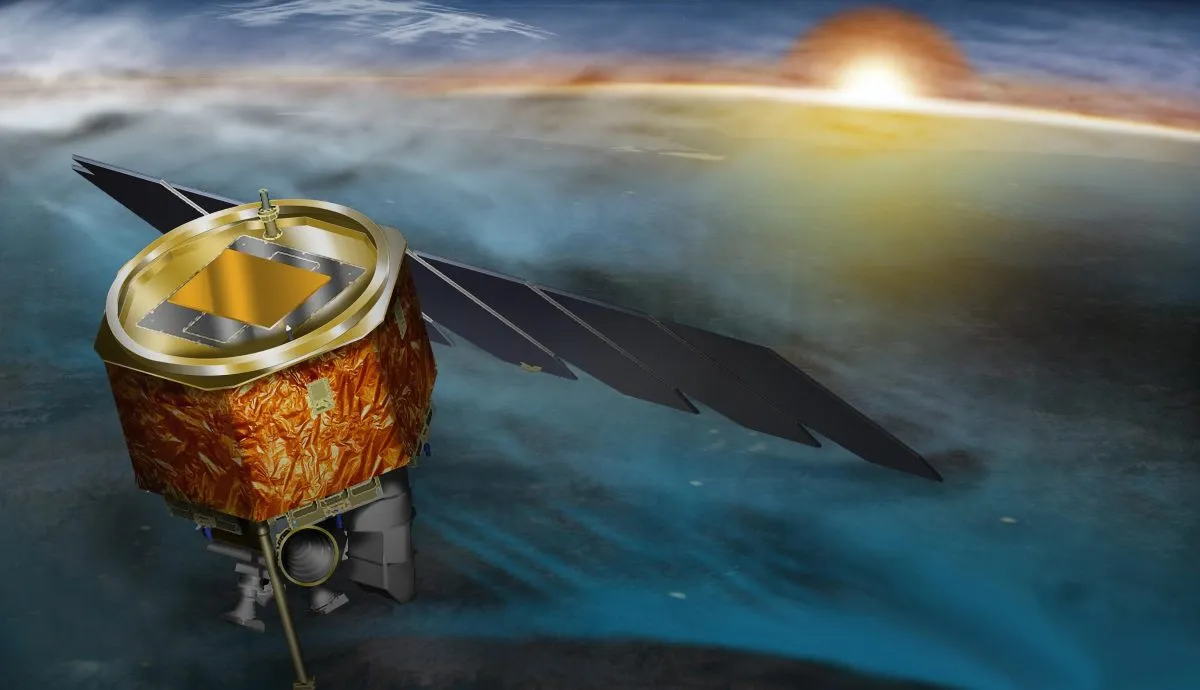
Various satellites have observed noctilucent clouds (NLCs) over the years, but the first one dedicated to studying them was NASA’s Aeronomy of Ice in the Mesosphere (AIM).
With Prof James Russell of Hampton University in Virginia as its principal investigator, and costing $140m, it launched on 25 April 2007 to begin its two-year mission.
Almost 16 years later, in March 2023, NASA finally ceased AIM’s operations after power loss in its battery left the satellite unable to receive commands.
The data AIM gathered was crucial for our understanding of the causes and formation of NLCs, and featured in 379 peer-reviewed scientific papers.
AIM’s successor, the Atmospheric Waves Experiment (AWE), is scheduled to launch in December 2023.
It will perch on the International Space Station and study gravity (or buoyancy) waves, which transport heat and energy produced by powerful weather disturbances in the troposphere up to the higher regions of Earth’s atmosphere.
This article originally appeared in the June 2023 issue of BBC Sky at Night Magazine.
